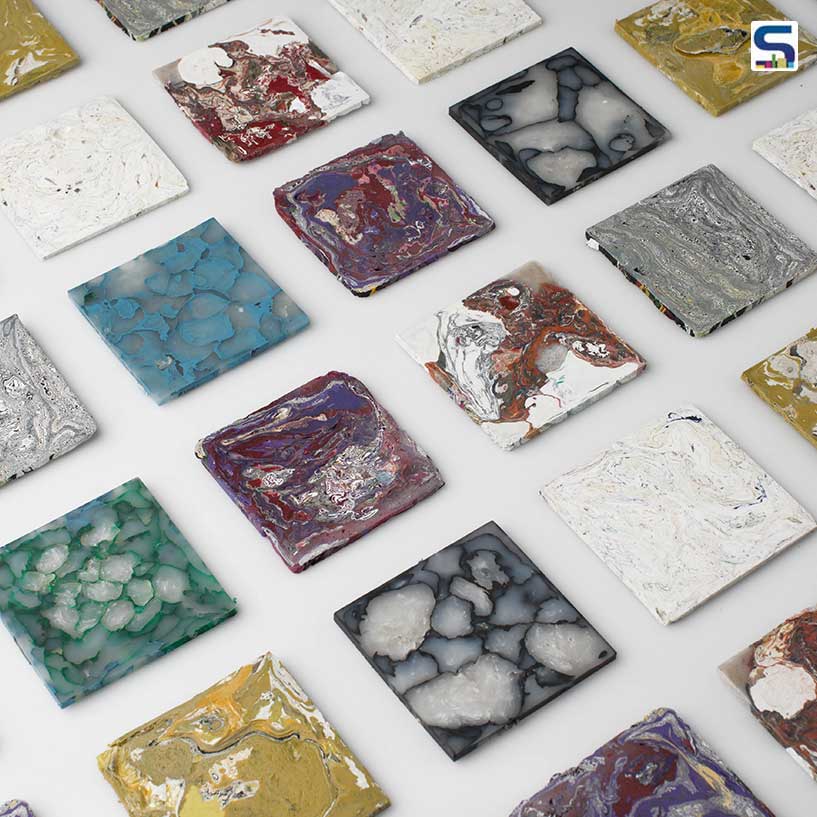
For her bachelor’s degree at the Koln International School of Design, student designer Enis Akiev created a material from plastic waste by exposing it to processes that are similar to a rock formation. Named Plastic Stone, the Kazakhstani designer’s method of turning single-use plastic packaging into tiles incepted from the thought that nothing is worthless. Know more about the project on SURFACES REPORTER (SR).
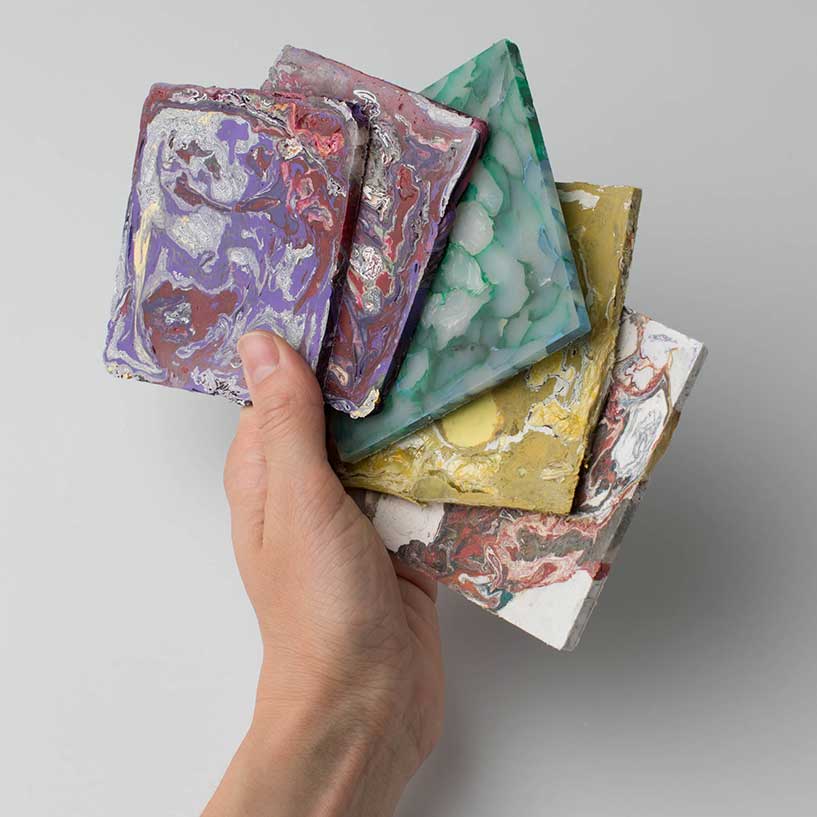
A new kind of stone
According to Akiev, plastic waste usually ends up invading our geological landscape and becomes a part of stone sediments on beaches and forms plastiglomerate, a new kind of stone. “There is no such a thing as waste. I raise the value of plastic trash to show the external costs and change the perception so it is no longer seen as trash,” he adds.
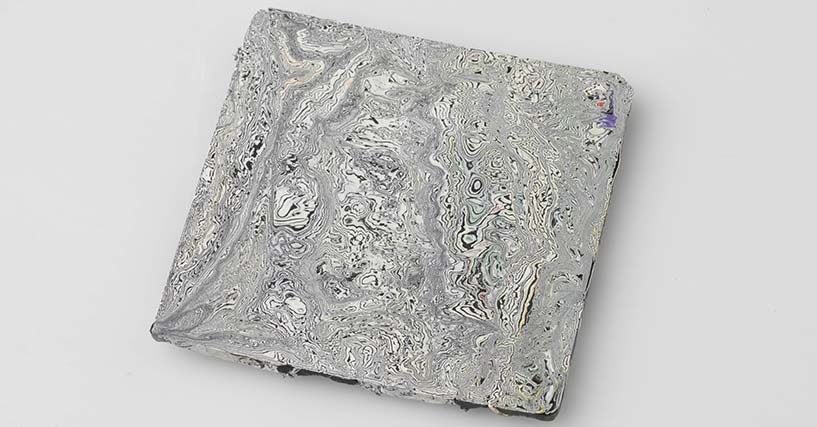
For her degree project Plastic Stone, Akiev made use of single-use plastic packaging as raw material. Despite disposing of it, plastic never goes out of sight. It ends up in landfills or oceans. Seeing this, Akiev started observing the change in the material at several intervals. During this, she stumbled upon a report from the Geological Society of America that announced the discovery of a new stone called plastiglomerate. Its discovery was made in 2013 in Hawaii when a volcanic eruption melded plastic waste alongside natural materials such as rocks, sand and lava fragments.
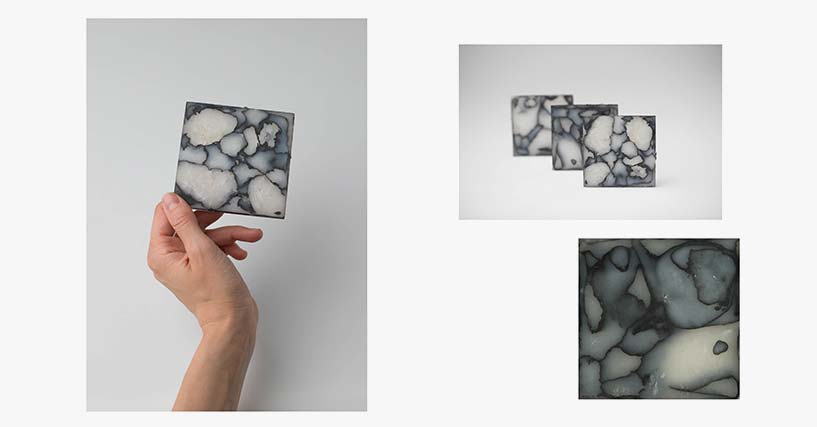
The process
Just as metamorphic rocks such as marble that develops flowing and irregular patterns through heat and pressure, Plastic Stone tiles also bear the same conditions to achieve the same effect. From trash sorting facilities, Akiev collected household plastic waste, which she categorized into colour and type before washing and drying. The plastic is then melted in an oven and poured into a mould to give the desired form. For the final touch, the tiles are cut and sanded.
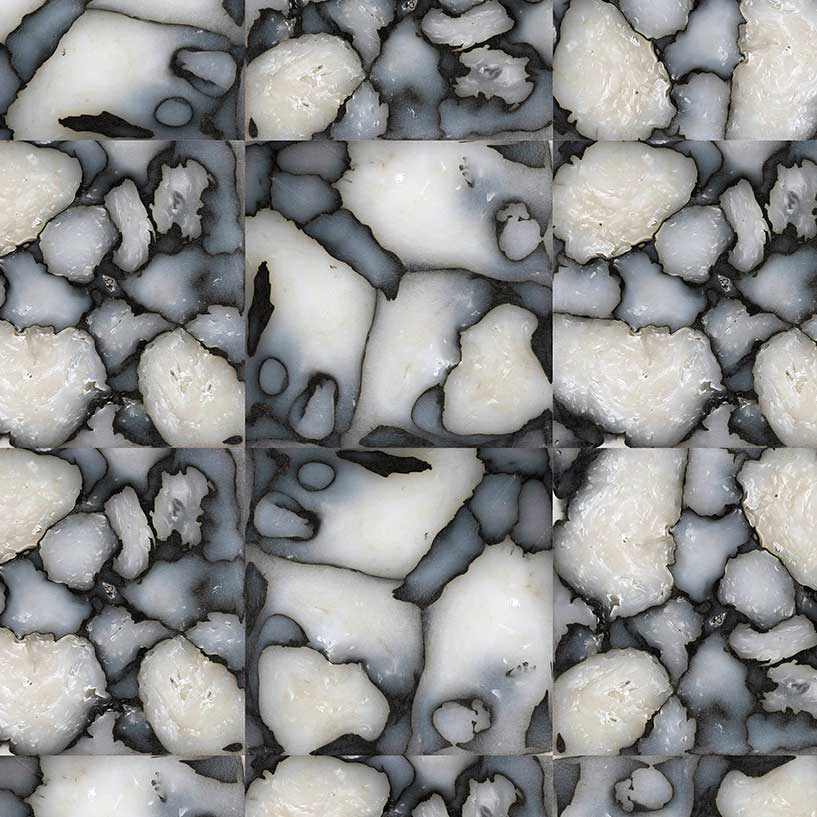
Similar to a rock formation, he achieved a similar structure through heat, movement and pressure but in a much lighter approach. The process helped her create an array of coloured tiles with different tones. Without any additional colour or binding agent, the colour and patterns obtained are entirely depended on the sorting of waste into matching piles where she layers and forms the plastic foils. Designed mainly for interior applications, Plastic Stone tiles aim to educate and promote the reuse of single-use plastic which often causes pollution.
Image credits: Enis Akiev